





Dear Wildlife Friends,
A tiny paw takes a hesitant step into a big, new space. Striped ears stand up tall, on alert for signs of danger. Mom, sister and brother are just ahead on the path, so all must be safe. An unexpected splash from a nearby waterfall leads to a leap right back into the tiger night house. Mom patiently waits hours for the paw to emerge again, and finally gently takes her baby by the scruff to join the family in the Tiger River Habitat at Palm Beach Zoo. In the wild, a cautious cub and patient tiger mom are attributes that help them survive, as mortality rates are high at this vulnerable age. It’s estimated that 50% of cubs don’t survive. At our Zoo, it is a very different story.
The Association of Zoos and Aquariums (AZA) Species Survival Plan® (SSP) celebrated the cubs and the genetic diversity they will infuse for future generations. From outside the Zoo, more good news about wild tiger numbers increasing came in from our partner, the Wildlife Conservation Society (WCS).
The Zoo has a powerful purpose and ability to spark a connection between humans and nature. The transformative nose-to-whisker experiences we provide our guests long outlast their visits. With a family of tigers living at our Zoo, the need for a third tiger habitat is a wonderful “problem” to have. With your help, we are building the most innovative home for tigers and the most immersive visitor experience in our jungle as we continue to support our partners in the field.
As we venture into new spaces, let’s go together. Enjoy the amazing tale of the Malayan tigers at Palm Beach Zoo, and come by soon for a visit.

Stay wild,
MARGO MCKNIGHT PRESIDENT & CEO

 Mawar
Cover photo: Cahaya
Mawar
Cover photo: Cahaya
Imagine the wide-eyed wonder of a child when they first see a real tiger, not a video on a screen but a living animal that looks back at them with curiosity and responds to their presence. Animal encounters and experiential learning for children: That’s the importance of a visit to our Palm Beach Zoo."
 MICHELE KESSLER
MICHELE KESSLER
THE BIRTH OF A NEW ERA OF TIGERS at Palm Beach Zoo & Conservation Society
Api and cubs enjoying the Tiger River Habitat.

MEET THE PARENTS
Api and her mate, Kadar, are part of the Association of Zoos and Aquariums (AZA) Malayan Tiger Species Survival Plan® (SSP), which ensures a genetically healthy population of animals for the future in managed care. The birth of Malayan tiger cubs is a landmark event for the Malayan tiger subspecies, which are endangered in the wild.

Proud parents, Api and Kadar
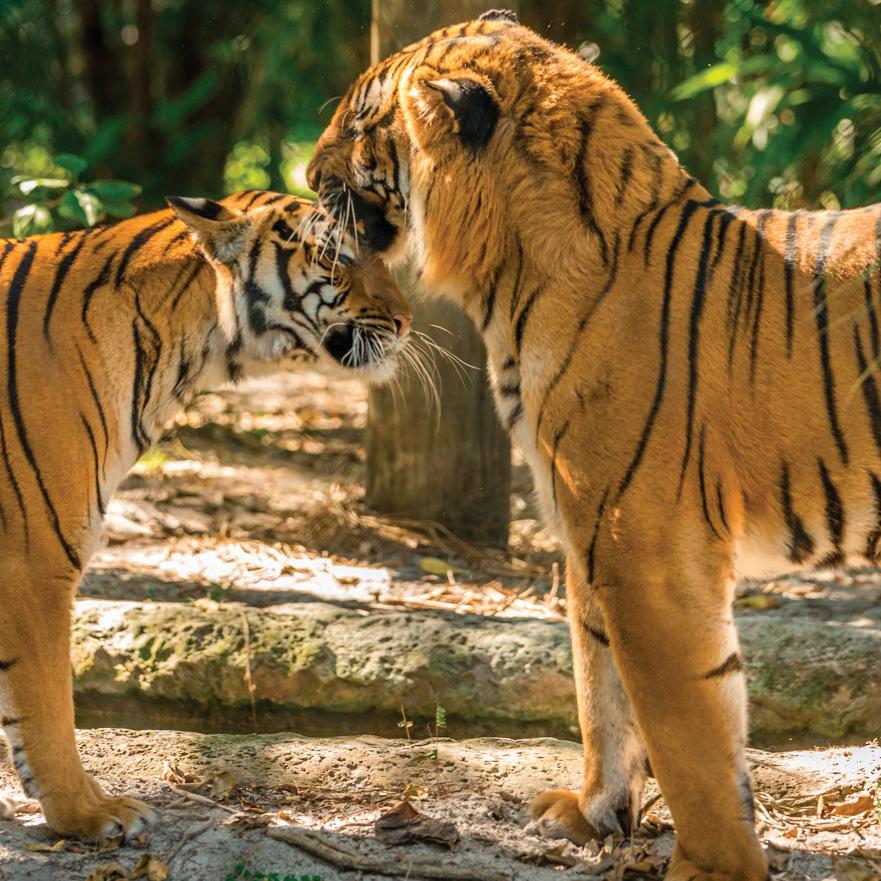

Api
THE CUBS' ARRIVAL
On May 12, 2020, in the midst of a global pandemic, the circle of life carried on at Palm Beach Zoo. Malayan tiger mom-to-be Api was showing signs of active labor. At 7 PM, the first cub emerged, followed by a second and third cub, arriving about 90 minutes apart. Our tiger care team, clad in full personal protective equipment (PPE), was standing by ready to assist if needed. The goal was to have wildlife be wild and let Api tap into thousands of years of motherly instincts as she would have in the jungles of Malaysia. Once the cubs were born, Api was immediately attentive to their every need.
Our whole Zoo kingdom was bursting with love and pride for the new family, which now includes three healthy cubs – two females and a male.
Palm Beach Zoo and Conservation Society is providing protection for wild tiger populations by working with other AZA institutions to ensure a sustainable and healthy genetic pool. With tiger populations and genetics fluctuating in the wild, the birth of two female tiger cubs comes at a critical time, as we continue to grow a genetic 'reservoir' to aid in protecting this remarkable species in the future."
RENÉE BUMPUS, CHIEF ANIMAL & CONSERVATION OFFICER


EARLY DAYS
Tiger cubs are born blind; they gain full vision after the first few weeks of life. Once they reach the 30 -day mark, they have made it over most of the hurdles that keep veterinarians up at night! Just like in the wild, tiger cubs spend the first two months of life in the den with their mother, mostly eating and sleeping.

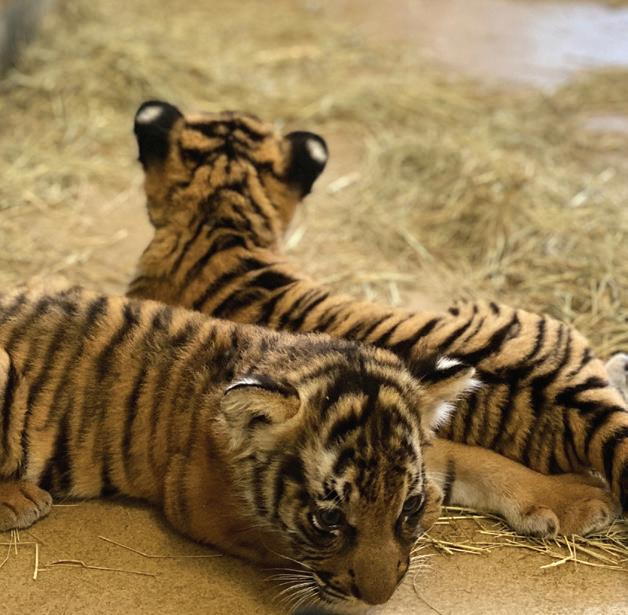

Images captured by den box footage to give Api uninterrupted time with her cubs.

 Cahaya and Triton's first check-up.
Cahaya and Triton's first check-up.
BOND WITH ZOOLOGISTS

Api spends time with the cubs teaching them how to be tigers, while the zoologists work with the cubs so that, in the future, they will participate in their own care and well-being just like their mom. To get there, key behaviors, such as presenting a paw for a blood draw or “emergency recall” to their hurricane-safe night house during storm season, are learned from very early on.
When the time came for the cubs’ first well-check and with the ultimate trust from Api, our veterinary and zoologist staff worked like a delicate pit crew examining, microchipping and giving vaccines (and squeezing in a few hugs). The little striped babies' exams were completed in 18 minutes.
FOREVER NAMES
The Malayan tiger cub trio beautifully represents their counterparts in the wild. They have received their forever names! Malayan tiger cubs traditionally receive their official name around their first birthday, which was May 12, 2021. Originally identified by the unique stripe pattern over each cub’s right eye, sweet “Heart” and feisty “Flower” are officially named Cahaya, meaning “light;” and Mawar, meaning “rose” in Malay. Charming Triton, referring to “King Triton” or “water” in Malay, will keep his name.
Our deepest gratitude goes to five of our Wildlife Heroes — Lillian and Luis Fernandez, Candy Hamm, Carole and John Moran — who made generous contributions to the Zoo through our online auction for the honor of naming the cubs.
We know the cats’ names are important; they help form the bond between the Zoo’s amazing care team and the animals. Seeing the zoologists connect with the tigers is an incredible experience for visitors.”
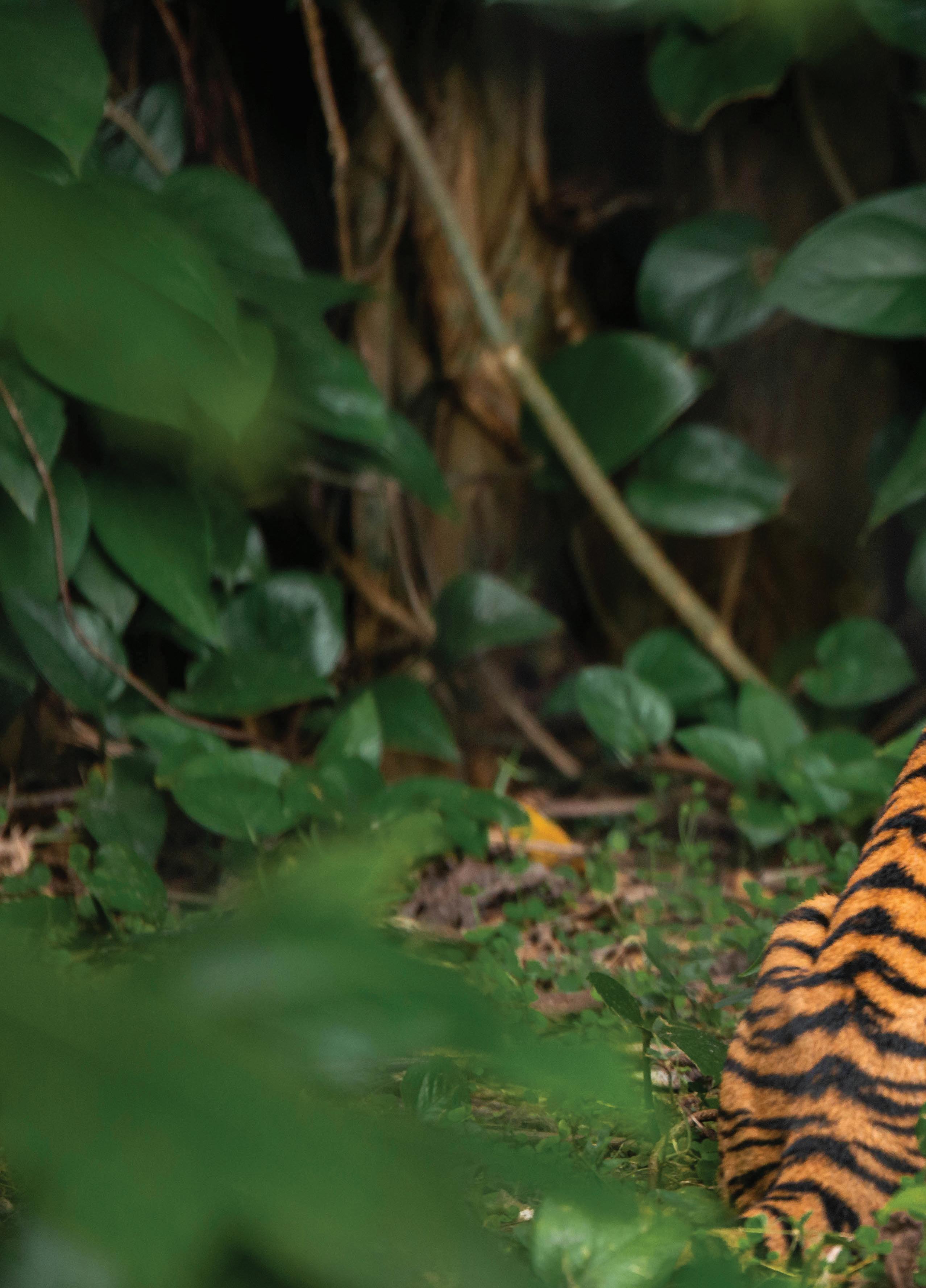
 CAROLE & JOHN MORAN
CAROLE & JOHN MORAN

 The cubs exploring the Tiger River Habitat.
The cubs exploring the Tiger River Habitat.
PERSONALITIES AS UNIQUE AS THEIR STRIPES
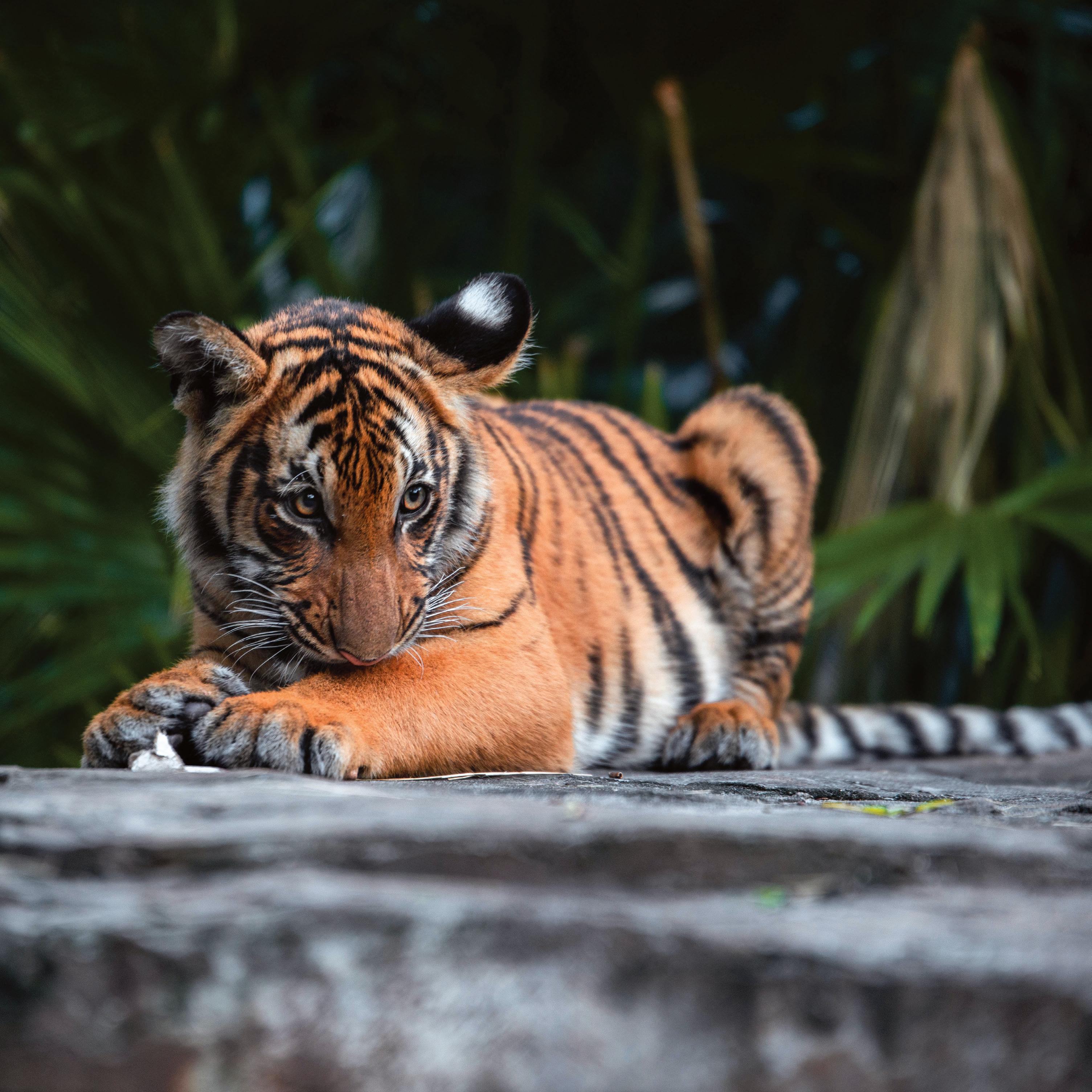
TRITON
The only male of the three, Triton is confident and playful yet gentle with his sisters. He loves to participate in zoologist behavioral sessions and is always the first of the cubs to saunter up to join in on fun enrichment activities. He is truly bonded to the zoologists who care for him and will often follow them around to get their attention and some delicious treats!
CAHAYA (Kye-yah)
Considered the spitfire of the trio, Cahaya acts first and thinks later! The dominant cub of the family, she is spunky and precocious, taking after her mother, Api. Like the heart-shape of her stripes above her eye denote, she loves to snuggle up with her siblings and “chuff” (happy tiger sounds) to show her affection. She is active and enjoys chasing around her brother and sister and playing in the water in the Tiger River Habitat.
MAWAR (Mah-wah)
The sweet and shy Mawar is the more cautious one of the three. She will allow Triton and Cahaya to try new things first as she sits back to watch what happens. She is much like her father, Kadar, reserved and observant, so zoologists worked diligently to earn her trust. Highly intelligent, she notices everything and learns from her mother and rambunctious brother and sister.


A LEG UP ON SPECIES SURVIVAL
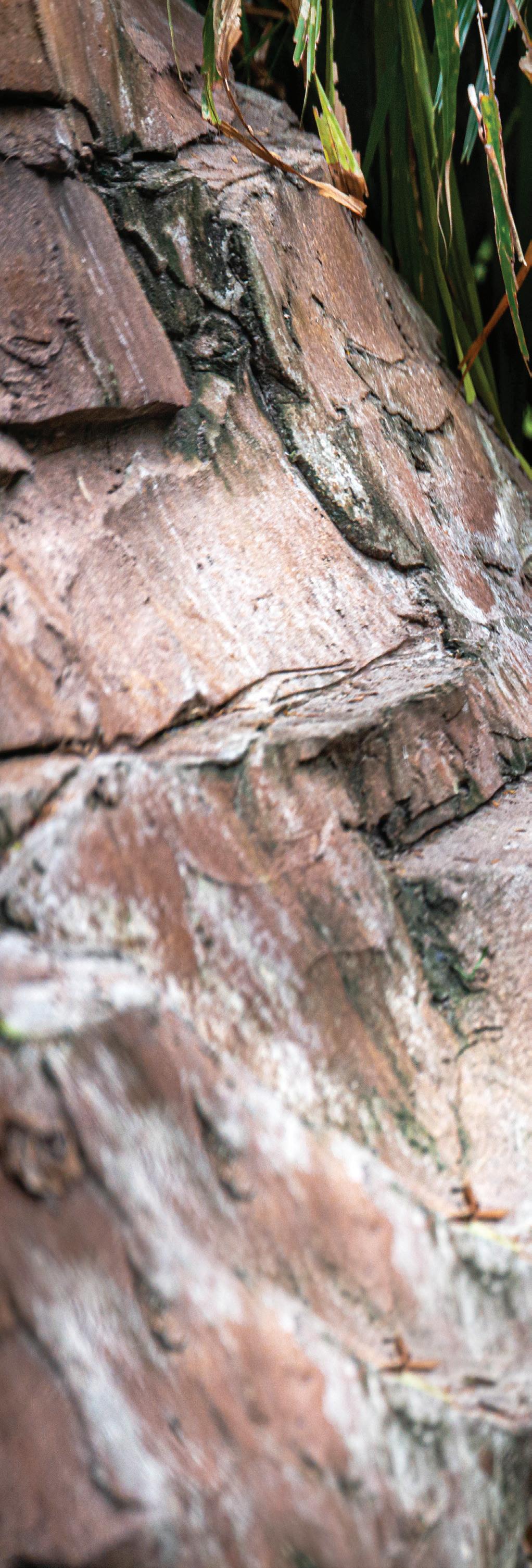
Our particular subspecies of tiger residents (Malayan) are very important to the collective of AZA zoos. We have made great headway over the last few years, exceeding many welfare and wellness markers for these animals. As a testament, three healthy young tigers were born. Female cubs represent the best opportunity for Malayan tiger survival in managed care. As the cubs from this tiger family grow up, they are being paired with other cats and moving to partner zoos. Palm Beach Zoo will continue to be part of the Malayan tiger SSP® and, with your help, be ready to welcome future cubs.
The work of Palm Beach Zoo is rooted strongly in the conservation and care of animals worldwide threatened with extinction. We support the Zoo’s wildlife mission to give beauties like our Malayan tiger cubs a fighting chance.”
LUIS FERNANDEZ, PALM BEACH ZOO BOARD VICE CHAIRMAN

Mawar
A note from the field on a project we help fund:
In the Endau-Rompin Landscape where WCS works, tigers are gradually increasing, and it may be the only site in Malaysia where the population is not declining. Our conservationists see regular evidence of tigers breeding: camera-trap photos of tigresses and young tiger siblings, as well as dispersal of young adult tigers from the protected areas into the surrounding forest. These are all positive signs, showing a tiger population undergoing recovery. The commitment of our government partners to halt poaching, especially during COVID lockdown, has been inspiring.
Palm Beach Zoo’s generous support allows WCS’ work here to continue, to prevent losing our modest gains to date and to promote our long-term goal of an even more robust and rapid recovery. We are very grateful for your partnership.
We are still a long way from the Malayan tiger being anything other than critically endangered, but the early signs at Endau-Rompin show us that the tiger can be saved.
Dr. Luke Hunter
Executive Director, Big Cats Program at Wildlife Conservation Society
 @DrLukeHunter
@DrLukeHunter

YOUR IMPACT ENSURES:
INCREASED
PROTECTION
FOR TIGERS IN MALAYSIA
BACKING EXISTING WILDLIFE LAW ENFORCEMENT
EFFORTS ON THE GROUND
IN THE REGION
IMPROVED POLITICAL OUTREACH
IDENTIFICATION OF NEW TIGERS FOR TIGER CONSERVATION
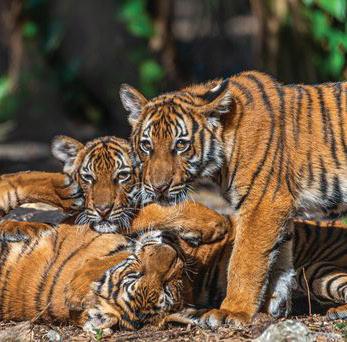
@thewcs
SAVING MALAYAN TIGERS FROM EXTINCTION
Less than a decade ago, Malayan tigers were declared critically endangered by the International Union for Conservation of Nature (IUCN) Red List of Threatened Species™. With fewer than 200 Malayans in the wild, Palm Beach Zoo joined forces with the Wildlife Conservation Society (WCS) for critical ground-level outreach in Malaysia to save these cats before they go extinct. Malayan tigers’ biggest threats are direct poaching of tigers and their prey, as well as habitat loss. Through your generosity as a Big Cat Society member, tiger numbers are increasing, and their future is more secure today.
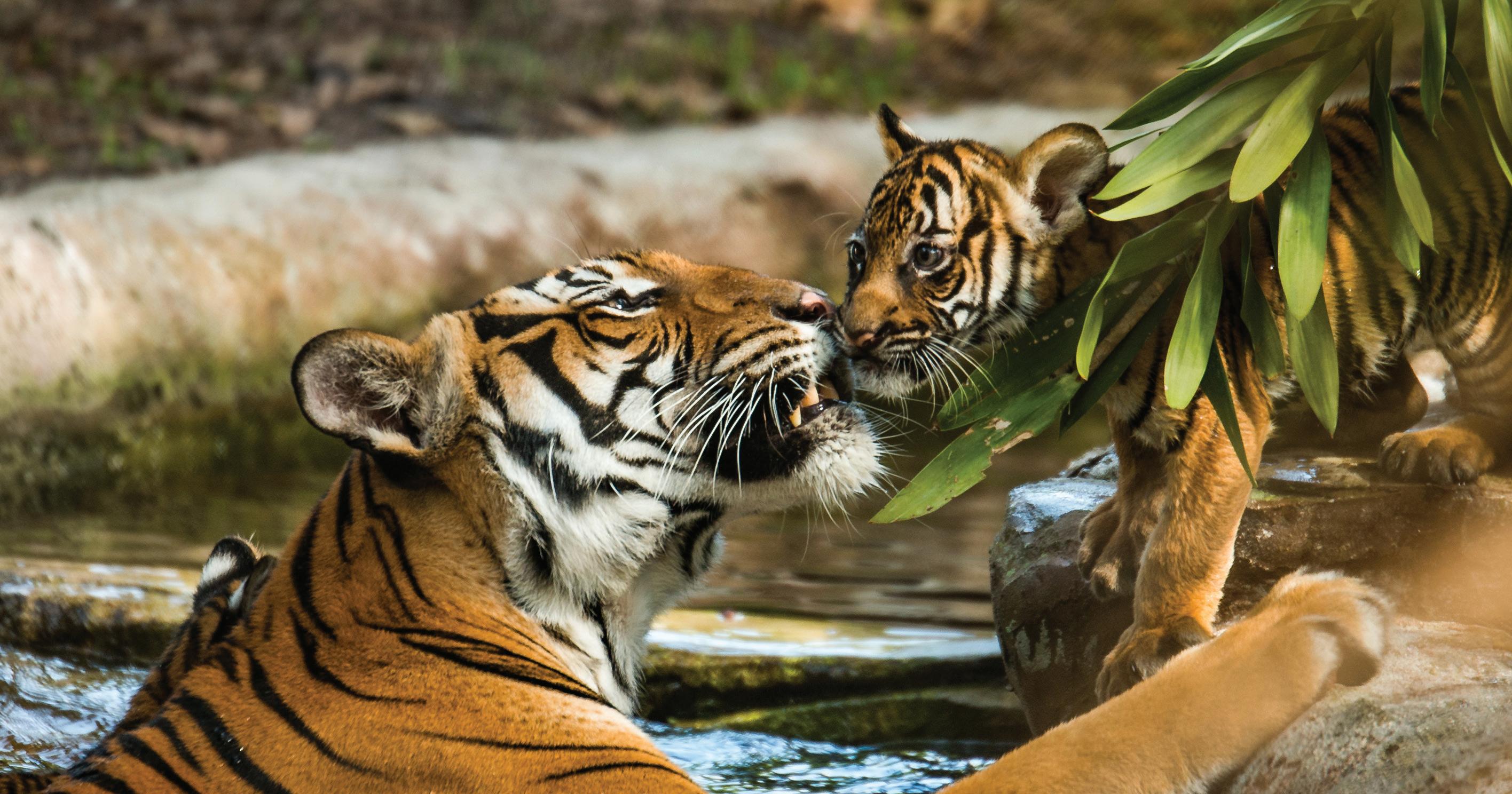 Api and Mawar
Api and Mawar
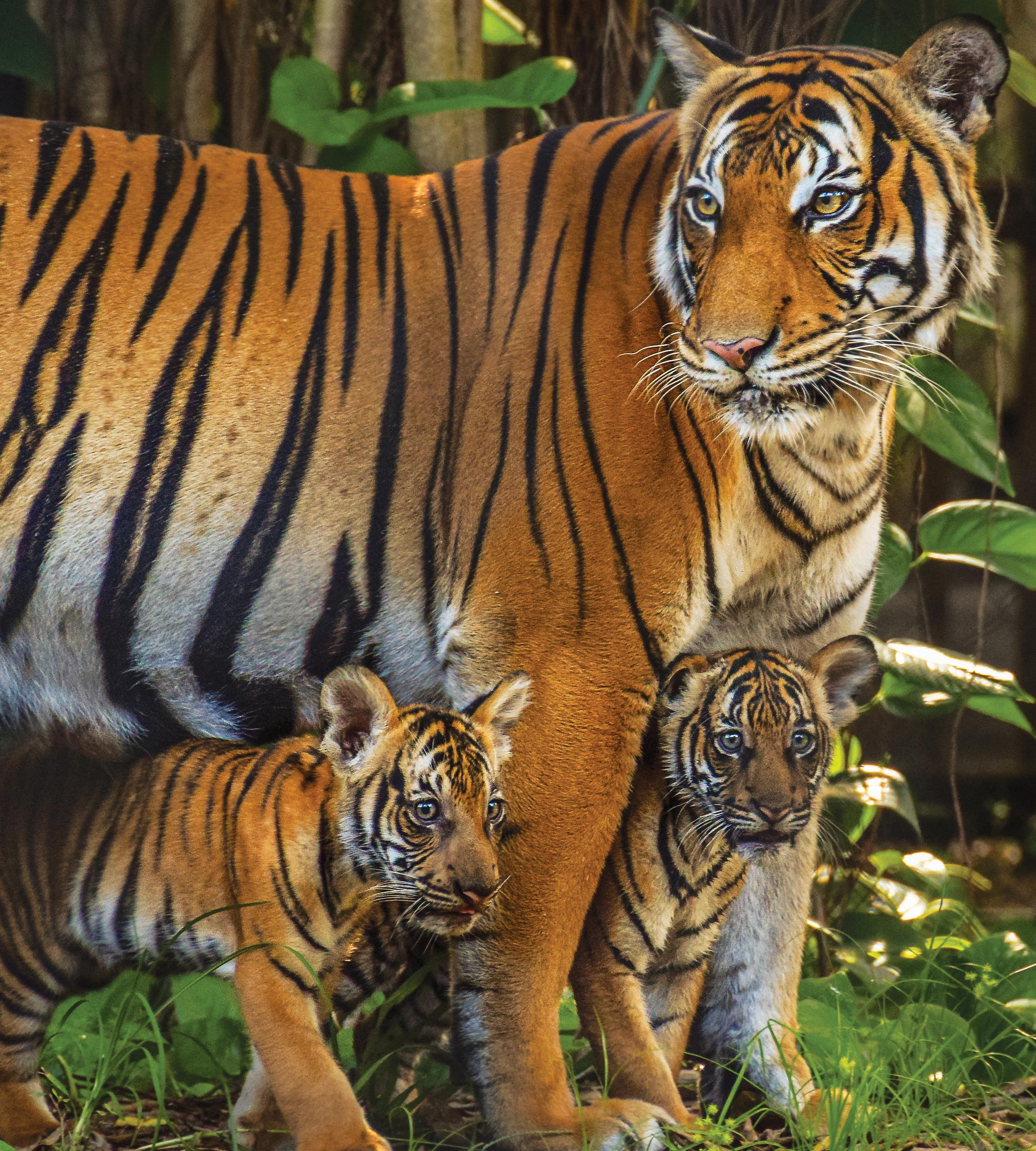 Api, Triton and Mawar
Api, Triton and Mawar
A FORCE FOR WILDLIFE: BUILDING TIGER FOREST
Inspiring people to take action starts by connecting Palm Beach Zoo visitors with the rare, endangered animals in our care, like the Malayan tiger cubs. Enter into tiger territory at the Zoo, which currently includes the Tiger River and Tiger Falls habitats. With the success of our growing big cat family, our tigers need more room to roam and more flexible, interesting spaces.
Tiger Forest will increase the number of tigers on the guest pathway, add a shaded habitat to the mix, and include cool spaces for the cats to expand their visibility and activity. This new habitat creates climbing elements and treetop paths where the curious striped creatures can see Zoo guests from above, giving them new perspectives of their space and providing nose-to-whisker engagements for both humans and animals. Envision tigers eating and playing in unique ways designed to augment their life and replicate wild behaviors.
We are building the Zoo of the future right here in the Palm Beaches for generations to enjoy. Tiger Forest will provide an even better quality of life than the big cats have now, which is already great!”
WHITNEY BYLIN

Triton
GIVE BIG CATS A FIGHTING CHANCE
As Api and Kadar continue their courtship at the Zoo, our Malayan tiger family depends on you. So do jaguars, panthers, ocelots and servals. Your caring commitment and courage provides endangered big cats with expanded, innovative habitats at the Zoo while also giving them secure futures abroad. Palm Beach Zoo is committed to Malayan tiger species survival. Your generosity has a direct impact in saving big cats in the wild.
To donate, please visit palmbeachzoo.org/give or contact Lindsay Shapiro, Gift Officer, by calling (561) 533-0887 ext. 222 or emailing BCS@palmbeachzoo.org.

A COPY OF THE OFFICIAL REGISTRATION AND FINANCIAL INFORMATION MAY BE OBTAINED FROM THE DIVISION OF CONSUMER SERVICES BY CALLING TOLL-FREE 800.435.7352 WITHIN THE STATE. REGISTRATION DOES NOT IMPLY ENDORSEMENT, APPROVAL OR RECOMMENDATION BY THE STATE. REG. #CH970.
SPECIAL THANKS
PALM BEACH ZOO BOARD OF DIRECTORS

EXECUTIVE COMMITTEE OF THE BOARD
Michele Kessler, Chairman
Luis J. Fernandez, Vice Chairman
Gary E. Krieger, Treasurer
Daniel J. Comerford III Ph.D., Secretary
Ruth Baum
Maura Ziska Christu
Guillermo Perez-Vargas
Mitchell Quain
Matt Valle
BOARD MEMBERS
Kane K. Baker
Marilyn Beuttenmuller, Esq.
Whitney Wood Bylin
Jonathan Clay
Julia B. Connors
Dale Coudert
Caroline Dean
Robert B. Dunkin II
Mei Sze Greene
Susanna P. Hager
Candace Hamm
Josh McGraw
George F. Merck
Carole Moran
Stephen E. Myers
Thomas C. Quick
Sandra S. Rooney
This book was generously underwritten by Romph • Pou Agency. Special thanks to Braman Motorcars, Lead Corporate Sponsor of the Malayan tiger habitat.
Kim Campbell, Board Member Emeritus
Ladona Hancock, Honorary Board Member
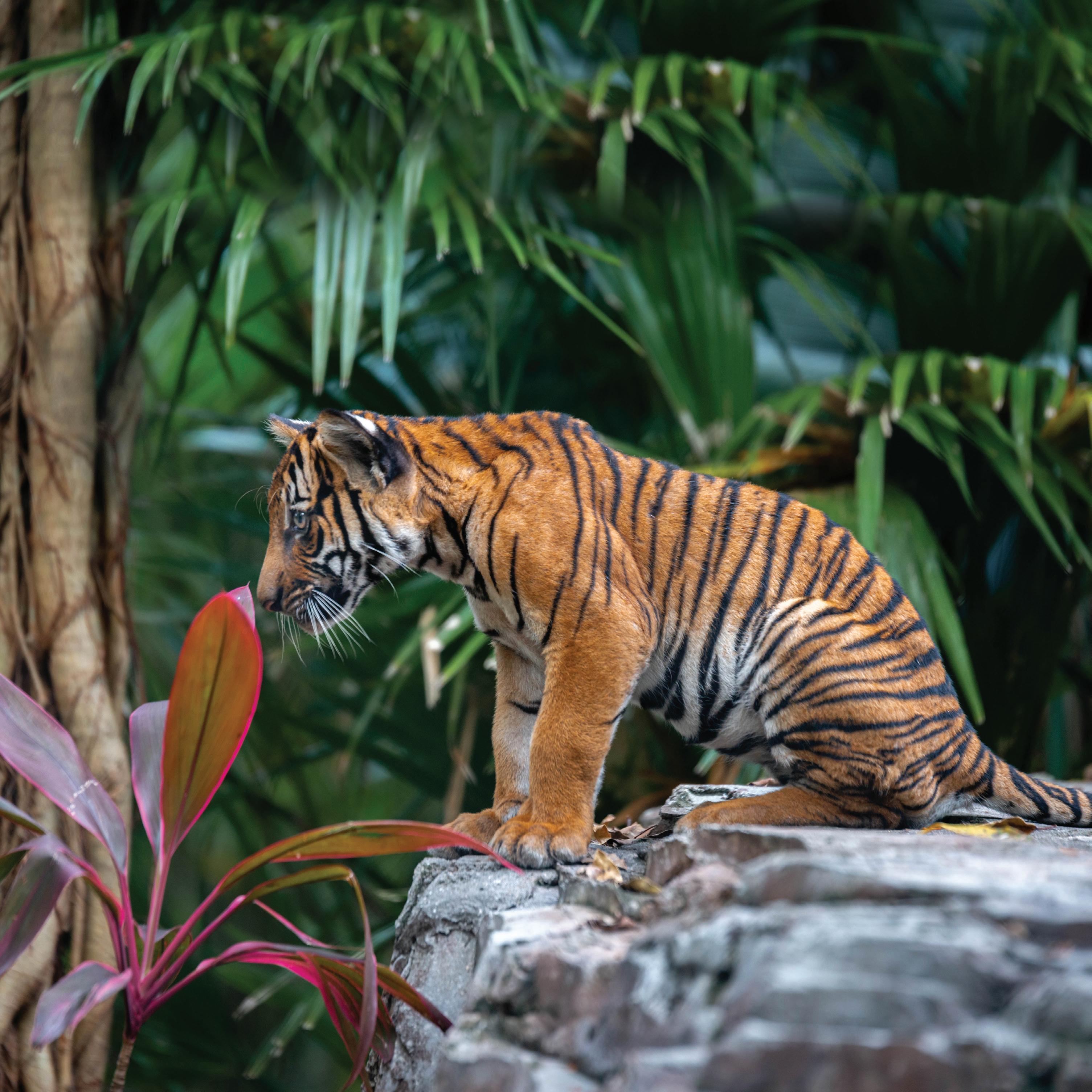
Mawar
BIG CAT SOCIETY MEMBERS
Sharada Shankar-Alducin & Donald Alducin
Kathleen Anderson Anonymous
Mary & Kane Baker
Ruth Baum
Diane & Peter Bergner
Lisa & James Bertles
Marilyn Beuttenmuller
Margaret S. Bilotti
Noelle Bivens
Mark E. Bryant Charitable Trust
Candida & Barlett Burnap
Paula Butler
Whitney & Eric Bylin
Kim Campbell
Samuel M. & Alma Catsman Foundation, Inc.
Yi-Hsin Chang
Maura & Eric Christu
Whitney & Jonathan Clay
Susan & George Cohon
Kathie & Dan Comerford
Julie & Mike Connors
Stephania Conrad
Dale Coudert
Kevin Crowley
Debbie & Philippe Dauman
Caroline & Thompson Dean
Rebecca & James Dockter
Hank Dow
Debbie & Robert Dunkin
Maureen & Ronald Early
East Coast Zoological Society of Florida Inc.
Suzanne & The Honorable Edward Elson
Gail & Alfred Engelberg
Family Management Corporation
Lillian & Luis Fernandez
The Mary Alice Fortin Foundation, Inc.
Renate Franco
Janellen & David Gerstein
Jeffry E. Giangrade
Phyllis Goldblatt
Gary Goldring
Kitty & J. Graham Goldsmith
Kimberly & Scott Goodwin
Elizabeth & John Gorski
Jeannie & T Grant
Jeff & Mei Sze Greene
Danielle & Buckley Griffis
Laura & Joshua Gross
Allison & Stuart Haft
Susanna P. Hager
Anne & S. Matthews V. Hamilton Jr.
Candace Hamm
Alice Hanley
Carole & Rod Hartless
Merrill G. & Emita E. Hastings Foundation
Brandie & Todd Herbst
Cathy & William Ingram
Karyn & Roger Janssen
Charlene & Richard S. Johnson Jr.
Tracey & Mark Keegan
Michele & Howard Kessler
Henni & John Kessler
Bertil & Joyce Kjellgren Family Foundation
Leonard Korman
Gary Krieger
Claire Levine
Ellen Liman
Susan Lloyd
Billi & Bernie Marcus
Wendy & Matthew Maschler
Ellen & Bruce Mavec
Irving May & Edith H. May Foundation
Sacha & Josh McGraw
Dede & George Merck
Carolyn & Eugene Mercy
Kristen Olewine Milke
The David Minkin Foundation
Mary Jane & Howard Miska
Lili & Ambrose K. Monell
Carole & John Moran
Suzanne & Terry Murray
JoAnna & Stephen Myers
Ann Nitze
Pauline & William Nutting
Thomas O’Neill
Susie & Bob Parsons
Cecilia & Guillermo Perez-Vargas
Margi & Michael Picotte
Mathias Piskur
Pauline Pitt & Jerry Seay
Blanca Luaces & Steven Pliskow
Afsy & Carter Pottash
Mitch Quain
Thomas C. Quick
Pamela & Ted Rauch
Maureen Rheen
The Ritchie Family Trust
Faye & Bruce Robb
Romph & Pou Agency, Inc.
Sandy & Pat Rooney
Barbara & Richard Rothschild
Susan & Howard Rubin
Margaretha Rumbough
Frances G. Scaife
Alison Holtzschue & Douglas Schloss
Susan & Charles Schwartz
Michelle & Christian Searcy
Linda & Donald Silpe
Lainey & Beryl Simonson
Abby & Pierce Sioussat
Christine & Robert Stiller
Carolyn Susman
Charlot Taylor
Susan O. Taylor
Margaretta Taylor
Jennifer & Matt Valle
Iris Valle
Dea & Albert Van Metre
Visse Wedell
Frances & Robert Weisman
Kendall Wheeler
Paula & Paul Wittmann
Susan & Bob Wright
Noreen Zanft
Joan & Sal Zeitlin
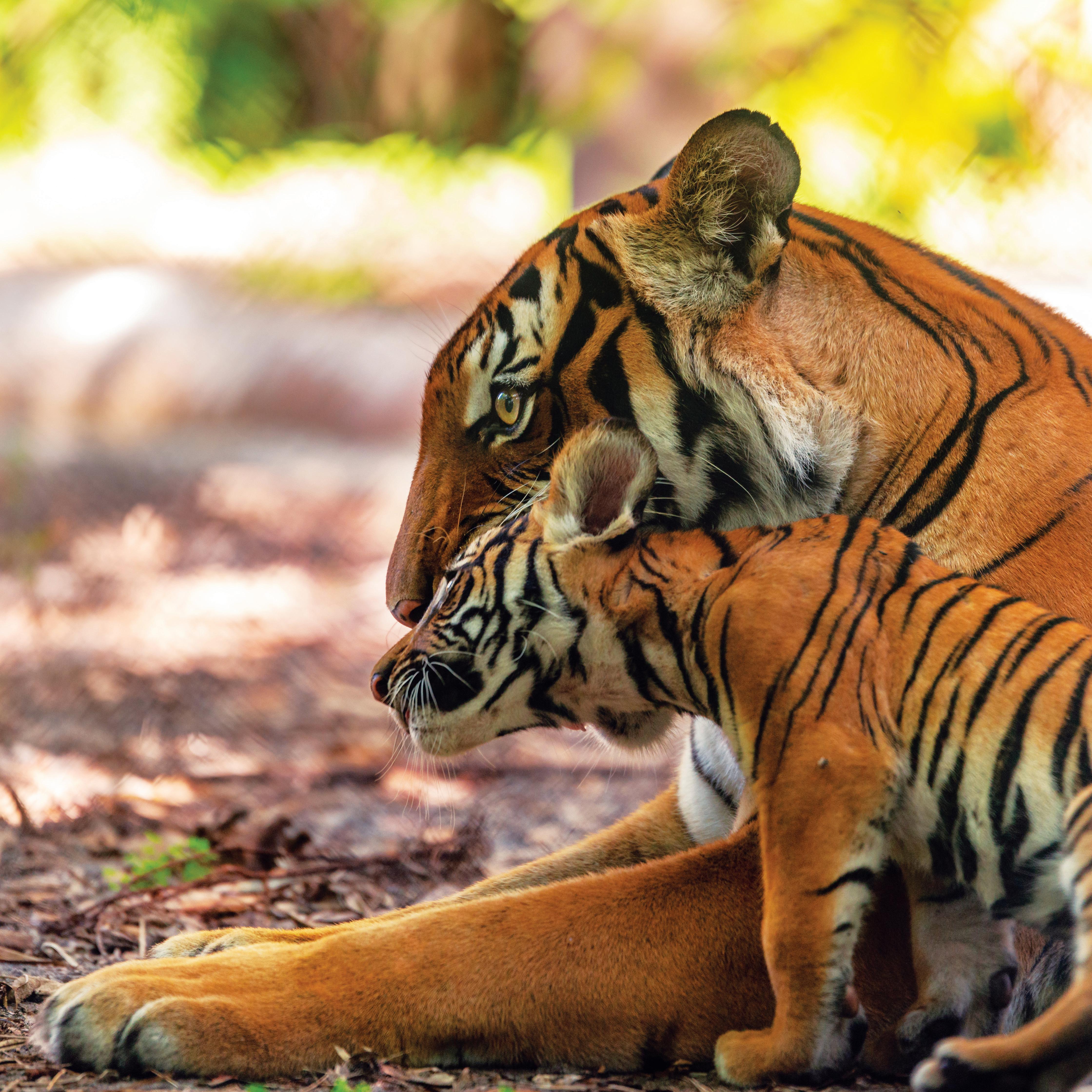 Api and Cahaya
Api and Cahaya
1301 Summit Boulevard | West Palm Beach, FL 33405 561.547.WILD (9453) | www.palmbeachzoo.org








 Mawar
Cover photo: Cahaya
Mawar
Cover photo: Cahaya
 MICHELE KESSLER
MICHELE KESSLER











 Cahaya and Triton's first check-up.
Cahaya and Triton's first check-up.


 CAROLE & JOHN MORAN
CAROLE & JOHN MORAN

 The cubs exploring the Tiger River Habitat.
The cubs exploring the Tiger River Habitat.





 @DrLukeHunter
@DrLukeHunter


 Api and Mawar
Api and Mawar
 Api, Triton and Mawar
Api, Triton and Mawar




 Api and Cahaya
Api and Cahaya